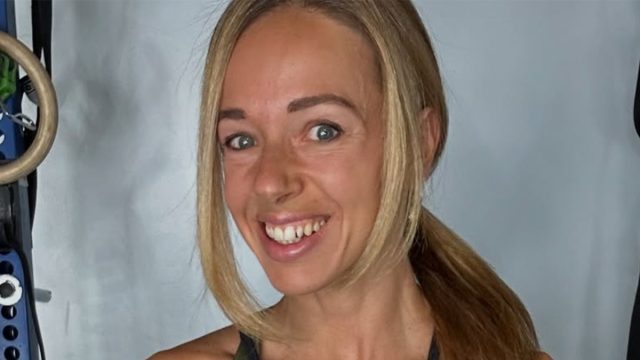4 Signs You're Burning Muscle Not Fat, Says Nutrition Expert

Are you trying to get toned by sticking to a calorie deficit but aren't getting the desired results? You might not be eating enough. Sarah Bouchard is a Nutrition Coach & Educator who helps women over 35 "ditch diet confusion & simplify nutrition" for "Sustainable fat loss + healthy body composition," she explains in her Instagram bio. "4 signs your calories are too low to get that 'toned' look you want," she writes.
"If you're eating less but not seeing the 'toned' lean look you want… It's not 'fat-storage mode'. The body doesn't store fat in a calorie deficit, if that were true nobody would die of starvation. However, eating 1200-1400 cals a day will not get you the "toned" body you want, for a number of reasons," she writes.
You're Always Hungry and Never Satisfied
The first sign is that you are always hungry "and never feel satisfied," she writes. "Not just cravings, but a constant 'never full' feeling? That's your body screaming for fuel. Chronic under-eating = low satiety = high urge to overeat later."
RELATED: 12-3-30 Walking Method: 20 Proven Tips to Lose Weight Faster
You Are Losing Weight, But Don't Look Leaner
The second sign is that you're losing weight but don't look any leaner. That "skinny but soft" look? "It's often a sign you're losing muscle along with fat—because your body doesn't have enough energy or protein to build and preserve lean tissue," she says.
You're Constantly Exhausted
The third sign? "You're constantly exhausted—even after 8 hours of sleep," she writes. "When your calories are too low, your body downregulates energy output. You might feel too tired for workouts, walks, or even your usual day-to-day activity."
Your NEAT Decreses
The final sign is a reduction of NEAT (non-exercise activity thermogenesis). "This is a direct side effect of extreme calorie reduction which makes your body move less in order to preserve energy," she says.
RELATED: 8 High-Protein Foods with Nearly Zero Calories That Melt Fat
What Most Women Get Wrong
She goes on to discuss what most women get wrong. "They try to get lean by slashing calories and doing tons of cardio, and want to get there in a hurry. But body recomp (building muscle and losing fat simultaneously) takes time!" she says. "Getting toned" means "building muscle, not starving yourself," she adds.
What You Need to Do
She explains what you need:
- Enough calories to fuel performance and recovery
- High protein (to maintain/build muscle and increase satiety)
- Fiber-rich carbs and fats for hormones, digestion, and energy
- More movement, not less—like increasing your daily steps.
RELATED: 20 Foods You Didn't Know Were Ultra-Processed
Eat Smarter
"Eat smarter, not less. Higher food quality, more protein and fiber, consistent strength training, and walking more each day = the real 'secret' to looking lean and toned," she concludes. And if you enjoyed this article, take advantage of these 15 Quick Ways to Lose Body Fat Percentage in a Week.




